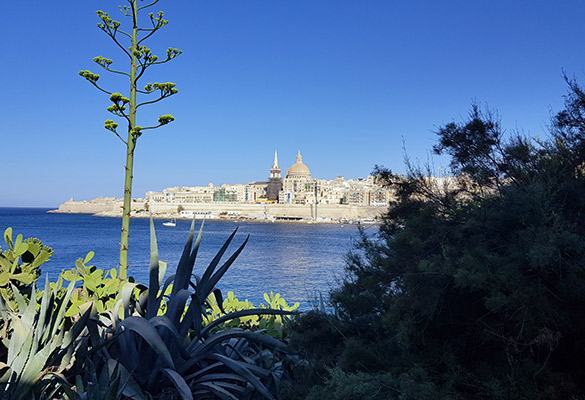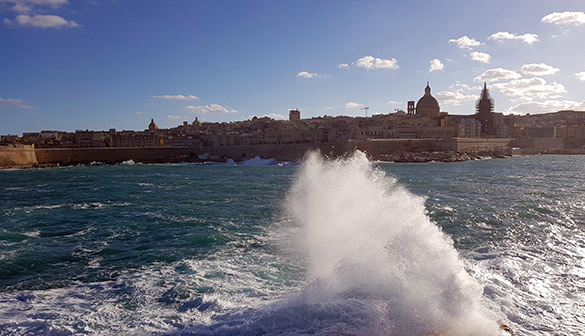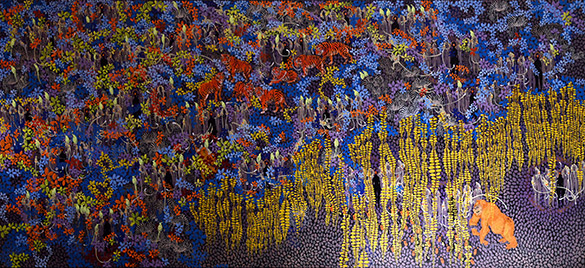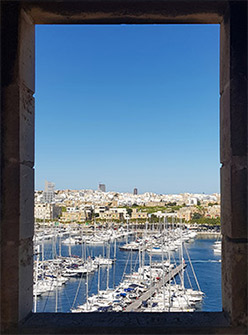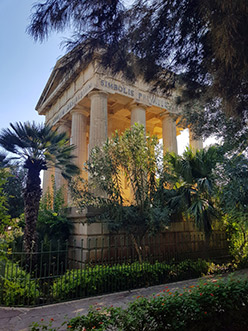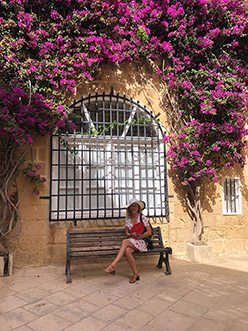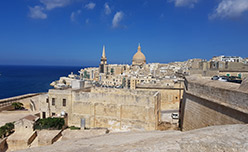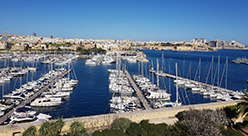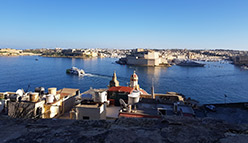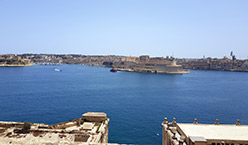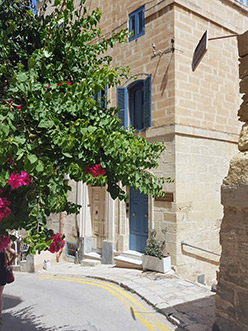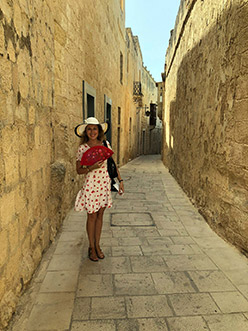Maryna Magnin, March 8th, 2022
-- The
original text in French --
-- The text in German --
-- The text in Mongolian: орчуулга Монгол хэл дээр --
-- The text in German --
-- The text in Mongolian: орчуулга Монгол хэл дээр --
English translation: Nicola Childs-Adams, published on March 22, 2022, Berlin
It all started on a grey and dreary day: it was November 19th. The hours dragged painfully by in the gallery (1)
in which I worked, and few visitors were walking in the streets. It was
a completely normal day. All of a sudden, the door opened. A man
entered.
Put like that, this would seem to be the beginning of a film. But aren’t films inspired by reality? Does fantasy not, after all, build its very foundations upon reality? In my case, inspiration never strikes with a film, book, or TV-series, but rather with the beginning of a beautiful and surprising encounter. It is often said that it is the most improbable of encounters, those that happen when we least expect them, that are the most interesting. I now recognise just how true and meaningful this saying is. The man that pushed open the door to the gallery on the day in question was none other than Otgonbayar Ershuu, more widely known by his artist’s name, “Otgo”. He entered gently, silently, like a dandelion fluff landing on the grass, without making a sound.
He took some time to look at that which could be found in the small shop of the gallery: paintings, accessories, jewellery, books, works of art. At that moment, I was working at my computer and my colleague, Maria, was working not far from me, at a desk near the centre of the room. After lingering a while over the current exhibitions, he approached Maria’s desk to speak with her. Usually, people who come to the gallery ask the same questions: How much does this or that object cost? Is there an admission charge for the exhibition? Who is the artist who made this sculpture or painting? These are, most often, questions that don’t lead to long exchanges. Questions that permit pre-fabricated responses, prepared in advance, given, of course, always with a smile. “Manners before all else” is a fast rule, even if the answers to such questions are always the same. The man who had just come in, however, wasn’t asking this sort of question. Had he come for another, more interesting, reason, perhaps? No, Otgo was not there to ask the price of that delicate silk scarf from Malta or those hand-crafted earrings; rather, his interest lay with the gallery itself, the old warehouse converted into a contemporary art gallery. He looked at Maria, asked an initial question, and the dialogue took off from there. Otgo was asking questions about the gallery, the artists that exhibited their works here, possible partnerships. He wanted to know whether it would be possible for him to exhibit his works in the gallery. I listened, growing increasingly interested by this visitor so different from the others, all the while continuing my work. I remember admiring him immediately. He had, in his eyes, a look so kind, so very human. He knew how to listen, show interest in others, reply and argue when necessary. He had a positive, almost luminous energy. He presented himself briefly, without putting on airs, and then inquired about Maria, her job, her studies; I found that fantastic. My colleague, in return, spoke of the gallery, the owner, and gave him a small tour. I continued working, all the while observing their movements out of the corner of my eye. As the owner of the gallery wasn’t there that day, no negotiation could really take place. Consequently, with explanations finished, he left his card, thanked us, and went on his way. The gallery became silent once more and routine resumed its course.
1) - Valletta Contemporary, Valletta, Malta
Intrigued, I decided to look at the card that he had left. It was delicate and finely made. There was a small symbol embossed on the left side, the symbol of Mongolia. This seemed to me to be at once incredible and improbable. Incredible, because Otgo was not only a recognised artist that had long made a living from his art, but the Chief Curator and head of External Affairs of The National Art Gallery of Mongolia. Improbable, because even if a gallery is an appropriate place to come across artists, it is rare that one meets Mongolian artists. To be honest, I knew nothing about art from this country. The only things that came to mind were wild horses, yurts, warriors and immense steppes. Superficial and limited images, at best. A bit ashamed of the limited knowledge I possessed, I decided that very evening to do some more in-depth research on Mongolian art and history. This thirst for knowledge and its discovery is among the most beautiful consequences resulting from an unexpected encounter. It pushes us to expand our horizons, to be more open, and to step outside our comfort zones in order to set off on an adventure. And that’s what I did. I decided, after a few days, to write an e-mail to Otgo hoping that he would accept to meet the humble student of cultural management that I was. To my great surprise, his response came without delay. Whilst awaiting this response, my mind had already started imagining a highly complex, very erudite and very busy person, a portrait that would ultimately prove to be false in the extreme, as I would soon discover.
After exchanging several e-mails, we agreed to meet in a café to drink hot chocolate. A good place for this was a café by the name of Sunday in Scotland. I find their hot chocolate delicious, both thick and creamy. This was no unearned praise. I had solid proof of it, since I had tasted it beforehand. When the day finally came, I was the first to arrive. The weather outside was not the most agreeable and I entered the café quickly. I was furthermore hastened by the need to secure seats, which is not always easy as the café is renowned in the area. When entering, I notice that only one table is free. I jump on it. Perfect, I’ve got the table. At that moment, begins that all-to-familiar period of waiting we all encounter from time to time in the course of life, generally regarded as very long. That type of waiting where stress and excitation intertwine. People enter, exit, order cake and perfumed beverages, and I wait. The music rocks me to and fro and I gaze into the street, the falling drops of rain obliging passers-by to hurry on their way. About ten minutes later, the long-awaited man in question opened the door to the café. Otgo is here. He settles himself at the table and I thank him for coming. After exchanging a few words, I decided to go and order the hot chocolate that I had so boasted about. No luck on that day… They were all sold out. We were beaten to the punch. In the spirit of making the best of things, we decided to order a cup of tea and a coffee, because ultimately, the drink itself hardly mattered. We could be quite happy drinking from plastic cups, just as we could be quite miserable drinking from crystal glasses brimming with champagne. And as my mother once told me, “If two people get on well, and there’s a good connection between the two of them, it’s possible to laugh at everything, even the tea”. In any event, that day, my first impression was confirmed. Just as when he entered the gallery, Otgo was polite, attentive, kind and respectful. He replied to my numerous questions without even blinking and took pleasure speaking of his work. As for me, I listened to him attentively with the impression that my soul was becoming more and more enriched as the thread of dialogue continued. He spoke to me at length of his native land, Mongolia, of his artistic debuts, of his trip across his country to gain an impression of traditional painting and study it more deeply, of the time when he decided upon his area of specialisation and the production of his own paints, in the traditional vein. He put his heart into everything he did and that came across in his works. As the conversation went on, one thing increasingly drew my attention: Otgo’s eyes. He has eyes that watch everything that happen around him. He’s always on alert as if wanting to perceive his next source of inspiration, his next muse or new ideas for his paintings. At certain moments, I had the impression that something was going to happen and that some intrusive element would end our discussion. I became on the alert myself, waiting for this “something” to materialise. Very often, I wanted to know what had attracted his attention, what he was thinking, of whom, of what. But I never got an answer because I never dared ask. I contented myself with observing in silence, keeping it shrouded in mystery. Besides, there is a certain beauty in mystery, in not knowing, in kept secrets. I truly believe that we need situations that we cannot explain, we need mysteries. All of life could be considered a mystery. As Paulo Coelho articulated well in his book, Brida: “We are travellers lost at an unknown sea. May god keep in us always the courage to accept this mystery”. I see artists and authors as people in a world apart, an untouchable world, different from the rest. Perhaps because their soul has a more pronounced taste for freedom? They are, for me, between two worlds. They are not yet part of the sky, but are already no longer just of the earth. This is neither good nor bad, it is simply different.
I think that we stayed for more than an hour and a half at this café. Time flies by quickly in such agreeable moments and, conversely, slows to a crawl in unhappy ones. I am not the first to have asked why. This may seem at first glance unjust, but perhaps it is only in this way that we can understand if a moment has made us happy or not. Our meeting flashed by at the speed of lightning. Otgo always made sure that my cup of tea remained full. Without waiting and without fully realising it myself, he filled it quickly, like a magician. By the time we exited the café, night had already fallen. The Christmas decorations, hung up that very morning, lit up the city with a thousand lights and a Maltese nativity scene had been set up at the heart of the city. A festive atmosphere warmed the hearts of passers-by and visitors. Walking in Valletta at that moment was quite miraculous. The Maltese love and know how to illuminate their treasured capital and it was that which I wanted to show to Otgo on that night, before retiring for the evening.
Otgo’s artistic heritage is vast and varied. Nevertheless, in each of his works, one finds a link to Mongolia, a nod to his native land. In his first works, he concentrated greatly on Mongolian traditional art, particularly the Thangka (miniature paintings of Buddha). These works are exceptional and highly spiritual. They are much more than a simple representation of a deity; meditating upon one of his Thangkas seems to almost summon the very deity it represents. In this way, an invisible connection is created between it and the observer, which allows the soul to find peace. Otgo spoke to me at length of his Thangkas paintings, of the time and patience required to finish each small work, and also of the long voyage he undertook to learn the traditional style. Every project begins with an outline, following codified and treasured rules, and finishes with painting. The preparation of the coloured paints is equally long and exacting and requires components of mineral or vegetable origin. Each painting is at once painstaking to produce and a form of meditation. The painter sits, calms his spirit and his soul and begins his work slowly, step-by-step. Nothing may disturb him. Only silence is his companion. Otgo explained that he could paint for hours without tending to his basic needs. Starting a painting resembles creating a particular atmosphere that may not be disrupted, lest the profound connection between artist and his work disappear. There is no second chance, he must finish each work in one single sitting.
The rest of Otgo’s work is, although different, equally profound. One of the things I like most about his paintings are the flamboyant colours he uses. His scenes are intense and luminous. For me, they seem a true initiatory journey, an awakening meditation. If you don’t believe me, look upon his works and you will see, you will understand. The series Roaring Hoofs is a good example. One can’t help but admire it, cut oneself off from the outside world and dive inside his paintings. After a while, one hears the noise of hoofs and the horses’ heated breath. We see the rising dust and are transported by the endless racing of the horses in the vast, free plains of Mongolia. A race with neither beginning, nor end, simply advancing like the swirling eddies of time. Everything in its place. On the canvas, no empty space is left bare. Otgo’s most monumental work, My homeland, My steed, hangs in the Best Western Premier Tuushin Hotel in Ulaanbaatar. Here, too, horses gallop through the scene. They seem almost to have leapt from some ancient cave painting. The entire canvas is covered and we follow the race, rocked by the constant movement. Regarding it from afar, new figures and landscapes appear. The work thus becomes an immense playground for fantasy. Zurag-66 Tengis remains my favourite painting of this incredible series. Contemplating it, I see it come to life. The horses transform into waves and move freely, with abandon.
A second thing of interest is the details. Otgo’s works are meticulous; its painstaking production worthy of a Titan. The more we familiarise ourselves with his works and the longer we contemplate them, the more they come to life. As if by magic, details appear, compelling the eyes to be on the alert. This is particularly evident in Blue Horses, Hun, Human, Zurag 63 or in Paradise in miniature. In this last work, the décor is particularly opulent to the point of being almost psychedelic, and gives one the impression of being in the Garden of Eden, as imagined by its creator. Approaching the canvas, small figures appear: their poses at times erotic or, otherwise, dancing. The spell is immediate. One wants to dive deep inside this canvas to penetrate the hidden mysteries of this place and rest a while, if only for a moment.
Other than humans, other creatures people Otgo’s works: tigers, monkeys, horses and various birds, to name a few. I think that the use of such diverse fauna promotes an idea of the profound link that unites all living things. With Triptych: AMITAN-1, the spectator is plunged into a veritable aquatic ballet: fish, birds, humans and animals cohabitating in complete harmony. The spirits dance and swim, their souls seeming light. This cohesive harmony can again be found in Shine amidral -2. In Fly & Fly, another canvas of impressive dimensions, people fly alongside flocks of birds, the curves of their bodies suggesting that they themselves have become birds. They are happy and free as the wind, light as a feather, their souls equally weightless, with no cage holding them back. This picture emits a profound sense of peace which leaves one not unmoved. One could, quite easily, lose oneself, dreaming of this same freedom lost to time. In my opinion, all of Otgo’s works appeal to the senses and stir emotions, particularly when one takes the time to truly look at the work and delve deep within. When approached this way, his works have the ability to halt time and transport us, gently and lyrically, to another world: the world of the artist. In Gigantopithecus, one of his last works, creatures mix with a luscious natural world. Delving into the painting, it is possible to hear the noises of the jungle, the wind blowing, birds singing and the different animals all living together. Otgo’s own songs, traditional Mongolian songs, resurface from memory. Everything takes on a mystic air and a voyage of the deepest self begins. We are transported to a land where time holds no sway.
Like many artists, Otgo paints with burning relevance, addressing both the joy and suffering of the modern world. In his way, he depicts the reality of life on Earth. The artist, the painter, the poet are the silent witnesses to this reality. If we look towards the past, we see that life was blighted by illness that struck the entire planet. Like a sandstorm, it invaded entire countries with the quickness of a lightning bolt. Chaos set in. It is to represent this reality in his own way that Otgo created The Secret Matrix of Coronavirus and later Triptych: The Last Supper.. Through these works, he does a superb job of portraying the complete upheaval of life with the virus. A giant octopus snatches up people, later discarding them, lifeless. It almost seems as if one is passing through Hell. Concentrating further still, it is possible to hear a frightening or diabolical music of screams, wailing and laughter. Some celebrate, while others lie dying. In his work, Galleys of Souls, Otgo takes on the theme of slavery. People are piled high atop one another, their souls already ripped from their bodies. In this work, Hell is just as present, but the emotions it evokes are quite different: here the rhythm is slow, the weather is cold, and the agony of the slaves, palpable.
In my opinion, Otgo’s works invite all who study them to journey within to the depths of their soul, where everything is possible, where everything mixes to create oneness. They invite silent contemplation, dreaming and poetry. They open enticing new doors that beckon one to enter and set off on some grand adventure. Life is, ultimately, very beautiful; only it can make possible meetings such as these, at the very moment one least expects them. I thank Otgo profusely for his time, his kindness and his sympathetic ear. I hope that one day he will see the utmost respect I have for him.
À mon sens, les œuvres d’Otgo invitent toute personne qui les contemple à voyager en elle-même, au fin fond de son âme, où tout est possible, où tout se mêle pour créer le Tout. Elles invitent à la contemplation silencieuse, à la rêverie et à la poésie. Elles ouvrent une porte nouvelle et incitent à entrer à l’intérieur et à partir à l’aventure. La vie est finalement très belle. Elle seule rend possible les rencontres comme celle-ci, au moment où l’on ne s’y attend pas. Je remercie infiniment Otgo pour son temps, sa gentillesse et son écoute empathique. J’espère qu’un jour, il verra, le grand respect que j’ai pour lui.
Put like that, this would seem to be the beginning of a film. But aren’t films inspired by reality? Does fantasy not, after all, build its very foundations upon reality? In my case, inspiration never strikes with a film, book, or TV-series, but rather with the beginning of a beautiful and surprising encounter. It is often said that it is the most improbable of encounters, those that happen when we least expect them, that are the most interesting. I now recognise just how true and meaningful this saying is. The man that pushed open the door to the gallery on the day in question was none other than Otgonbayar Ershuu, more widely known by his artist’s name, “Otgo”. He entered gently, silently, like a dandelion fluff landing on the grass, without making a sound.
He took some time to look at that which could be found in the small shop of the gallery: paintings, accessories, jewellery, books, works of art. At that moment, I was working at my computer and my colleague, Maria, was working not far from me, at a desk near the centre of the room. After lingering a while over the current exhibitions, he approached Maria’s desk to speak with her. Usually, people who come to the gallery ask the same questions: How much does this or that object cost? Is there an admission charge for the exhibition? Who is the artist who made this sculpture or painting? These are, most often, questions that don’t lead to long exchanges. Questions that permit pre-fabricated responses, prepared in advance, given, of course, always with a smile. “Manners before all else” is a fast rule, even if the answers to such questions are always the same. The man who had just come in, however, wasn’t asking this sort of question. Had he come for another, more interesting, reason, perhaps? No, Otgo was not there to ask the price of that delicate silk scarf from Malta or those hand-crafted earrings; rather, his interest lay with the gallery itself, the old warehouse converted into a contemporary art gallery. He looked at Maria, asked an initial question, and the dialogue took off from there. Otgo was asking questions about the gallery, the artists that exhibited their works here, possible partnerships. He wanted to know whether it would be possible for him to exhibit his works in the gallery. I listened, growing increasingly interested by this visitor so different from the others, all the while continuing my work. I remember admiring him immediately. He had, in his eyes, a look so kind, so very human. He knew how to listen, show interest in others, reply and argue when necessary. He had a positive, almost luminous energy. He presented himself briefly, without putting on airs, and then inquired about Maria, her job, her studies; I found that fantastic. My colleague, in return, spoke of the gallery, the owner, and gave him a small tour. I continued working, all the while observing their movements out of the corner of my eye. As the owner of the gallery wasn’t there that day, no negotiation could really take place. Consequently, with explanations finished, he left his card, thanked us, and went on his way. The gallery became silent once more and routine resumed its course.
1) - Valletta Contemporary, Valletta, Malta
Valletta,
Malta
Intrigued, I decided to look at the card that he had left. It was delicate and finely made. There was a small symbol embossed on the left side, the symbol of Mongolia. This seemed to me to be at once incredible and improbable. Incredible, because Otgo was not only a recognised artist that had long made a living from his art, but the Chief Curator and head of External Affairs of The National Art Gallery of Mongolia. Improbable, because even if a gallery is an appropriate place to come across artists, it is rare that one meets Mongolian artists. To be honest, I knew nothing about art from this country. The only things that came to mind were wild horses, yurts, warriors and immense steppes. Superficial and limited images, at best. A bit ashamed of the limited knowledge I possessed, I decided that very evening to do some more in-depth research on Mongolian art and history. This thirst for knowledge and its discovery is among the most beautiful consequences resulting from an unexpected encounter. It pushes us to expand our horizons, to be more open, and to step outside our comfort zones in order to set off on an adventure. And that’s what I did. I decided, after a few days, to write an e-mail to Otgo hoping that he would accept to meet the humble student of cultural management that I was. To my great surprise, his response came without delay. Whilst awaiting this response, my mind had already started imagining a highly complex, very erudite and very busy person, a portrait that would ultimately prove to be false in the extreme, as I would soon discover.
After exchanging several e-mails, we agreed to meet in a café to drink hot chocolate. A good place for this was a café by the name of Sunday in Scotland. I find their hot chocolate delicious, both thick and creamy. This was no unearned praise. I had solid proof of it, since I had tasted it beforehand. When the day finally came, I was the first to arrive. The weather outside was not the most agreeable and I entered the café quickly. I was furthermore hastened by the need to secure seats, which is not always easy as the café is renowned in the area. When entering, I notice that only one table is free. I jump on it. Perfect, I’ve got the table. At that moment, begins that all-to-familiar period of waiting we all encounter from time to time in the course of life, generally regarded as very long. That type of waiting where stress and excitation intertwine. People enter, exit, order cake and perfumed beverages, and I wait. The music rocks me to and fro and I gaze into the street, the falling drops of rain obliging passers-by to hurry on their way. About ten minutes later, the long-awaited man in question opened the door to the café. Otgo is here. He settles himself at the table and I thank him for coming. After exchanging a few words, I decided to go and order the hot chocolate that I had so boasted about. No luck on that day… They were all sold out. We were beaten to the punch. In the spirit of making the best of things, we decided to order a cup of tea and a coffee, because ultimately, the drink itself hardly mattered. We could be quite happy drinking from plastic cups, just as we could be quite miserable drinking from crystal glasses brimming with champagne. And as my mother once told me, “If two people get on well, and there’s a good connection between the two of them, it’s possible to laugh at everything, even the tea”. In any event, that day, my first impression was confirmed. Just as when he entered the gallery, Otgo was polite, attentive, kind and respectful. He replied to my numerous questions without even blinking and took pleasure speaking of his work. As for me, I listened to him attentively with the impression that my soul was becoming more and more enriched as the thread of dialogue continued. He spoke to me at length of his native land, Mongolia, of his artistic debuts, of his trip across his country to gain an impression of traditional painting and study it more deeply, of the time when he decided upon his area of specialisation and the production of his own paints, in the traditional vein. He put his heart into everything he did and that came across in his works. As the conversation went on, one thing increasingly drew my attention: Otgo’s eyes. He has eyes that watch everything that happen around him. He’s always on alert as if wanting to perceive his next source of inspiration, his next muse or new ideas for his paintings. At certain moments, I had the impression that something was going to happen and that some intrusive element would end our discussion. I became on the alert myself, waiting for this “something” to materialise. Very often, I wanted to know what had attracted his attention, what he was thinking, of whom, of what. But I never got an answer because I never dared ask. I contented myself with observing in silence, keeping it shrouded in mystery. Besides, there is a certain beauty in mystery, in not knowing, in kept secrets. I truly believe that we need situations that we cannot explain, we need mysteries. All of life could be considered a mystery. As Paulo Coelho articulated well in his book, Brida: “We are travellers lost at an unknown sea. May god keep in us always the courage to accept this mystery”. I see artists and authors as people in a world apart, an untouchable world, different from the rest. Perhaps because their soul has a more pronounced taste for freedom? They are, for me, between two worlds. They are not yet part of the sky, but are already no longer just of the earth. This is neither good nor bad, it is simply different.
I think that we stayed for more than an hour and a half at this café. Time flies by quickly in such agreeable moments and, conversely, slows to a crawl in unhappy ones. I am not the first to have asked why. This may seem at first glance unjust, but perhaps it is only in this way that we can understand if a moment has made us happy or not. Our meeting flashed by at the speed of lightning. Otgo always made sure that my cup of tea remained full. Without waiting and without fully realising it myself, he filled it quickly, like a magician. By the time we exited the café, night had already fallen. The Christmas decorations, hung up that very morning, lit up the city with a thousand lights and a Maltese nativity scene had been set up at the heart of the city. A festive atmosphere warmed the hearts of passers-by and visitors. Walking in Valletta at that moment was quite miraculous. The Maltese love and know how to illuminate their treasured capital and it was that which I wanted to show to Otgo on that night, before retiring for the evening.
Otgo’s artistic heritage is vast and varied. Nevertheless, in each of his works, one finds a link to Mongolia, a nod to his native land. In his first works, he concentrated greatly on Mongolian traditional art, particularly the Thangka (miniature paintings of Buddha). These works are exceptional and highly spiritual. They are much more than a simple representation of a deity; meditating upon one of his Thangkas seems to almost summon the very deity it represents. In this way, an invisible connection is created between it and the observer, which allows the soul to find peace. Otgo spoke to me at length of his Thangkas paintings, of the time and patience required to finish each small work, and also of the long voyage he undertook to learn the traditional style. Every project begins with an outline, following codified and treasured rules, and finishes with painting. The preparation of the coloured paints is equally long and exacting and requires components of mineral or vegetable origin. Each painting is at once painstaking to produce and a form of meditation. The painter sits, calms his spirit and his soul and begins his work slowly, step-by-step. Nothing may disturb him. Only silence is his companion. Otgo explained that he could paint for hours without tending to his basic needs. Starting a painting resembles creating a particular atmosphere that may not be disrupted, lest the profound connection between artist and his work disappear. There is no second chance, he must finish each work in one single sitting.
The rest of Otgo’s work is, although different, equally profound. One of the things I like most about his paintings are the flamboyant colours he uses. His scenes are intense and luminous. For me, they seem a true initiatory journey, an awakening meditation. If you don’t believe me, look upon his works and you will see, you will understand. The series Roaring Hoofs is a good example. One can’t help but admire it, cut oneself off from the outside world and dive inside his paintings. After a while, one hears the noise of hoofs and the horses’ heated breath. We see the rising dust and are transported by the endless racing of the horses in the vast, free plains of Mongolia. A race with neither beginning, nor end, simply advancing like the swirling eddies of time. Everything in its place. On the canvas, no empty space is left bare. Otgo’s most monumental work, My homeland, My steed, hangs in the Best Western Premier Tuushin Hotel in Ulaanbaatar. Here, too, horses gallop through the scene. They seem almost to have leapt from some ancient cave painting. The entire canvas is covered and we follow the race, rocked by the constant movement. Regarding it from afar, new figures and landscapes appear. The work thus becomes an immense playground for fantasy. Zurag-66 Tengis remains my favourite painting of this incredible series. Contemplating it, I see it come to life. The horses transform into waves and move freely, with abandon.
A second thing of interest is the details. Otgo’s works are meticulous; its painstaking production worthy of a Titan. The more we familiarise ourselves with his works and the longer we contemplate them, the more they come to life. As if by magic, details appear, compelling the eyes to be on the alert. This is particularly evident in Blue Horses, Hun, Human, Zurag 63 or in Paradise in miniature. In this last work, the décor is particularly opulent to the point of being almost psychedelic, and gives one the impression of being in the Garden of Eden, as imagined by its creator. Approaching the canvas, small figures appear: their poses at times erotic or, otherwise, dancing. The spell is immediate. One wants to dive deep inside this canvas to penetrate the hidden mysteries of this place and rest a while, if only for a moment.
Other than humans, other creatures people Otgo’s works: tigers, monkeys, horses and various birds, to name a few. I think that the use of such diverse fauna promotes an idea of the profound link that unites all living things. With Triptych: AMITAN-1, the spectator is plunged into a veritable aquatic ballet: fish, birds, humans and animals cohabitating in complete harmony. The spirits dance and swim, their souls seeming light. This cohesive harmony can again be found in Shine amidral -2. In Fly & Fly, another canvas of impressive dimensions, people fly alongside flocks of birds, the curves of their bodies suggesting that they themselves have become birds. They are happy and free as the wind, light as a feather, their souls equally weightless, with no cage holding them back. This picture emits a profound sense of peace which leaves one not unmoved. One could, quite easily, lose oneself, dreaming of this same freedom lost to time. In my opinion, all of Otgo’s works appeal to the senses and stir emotions, particularly when one takes the time to truly look at the work and delve deep within. When approached this way, his works have the ability to halt time and transport us, gently and lyrically, to another world: the world of the artist. In Gigantopithecus, one of his last works, creatures mix with a luscious natural world. Delving into the painting, it is possible to hear the noises of the jungle, the wind blowing, birds singing and the different animals all living together. Otgo’s own songs, traditional Mongolian songs, resurface from memory. Everything takes on a mystic air and a voyage of the deepest self begins. We are transported to a land where time holds no sway.
Like many artists, Otgo paints with burning relevance, addressing both the joy and suffering of the modern world. In his way, he depicts the reality of life on Earth. The artist, the painter, the poet are the silent witnesses to this reality. If we look towards the past, we see that life was blighted by illness that struck the entire planet. Like a sandstorm, it invaded entire countries with the quickness of a lightning bolt. Chaos set in. It is to represent this reality in his own way that Otgo created The Secret Matrix of Coronavirus and later Triptych: The Last Supper.. Through these works, he does a superb job of portraying the complete upheaval of life with the virus. A giant octopus snatches up people, later discarding them, lifeless. It almost seems as if one is passing through Hell. Concentrating further still, it is possible to hear a frightening or diabolical music of screams, wailing and laughter. Some celebrate, while others lie dying. In his work, Galleys of Souls, Otgo takes on the theme of slavery. People are piled high atop one another, their souls already ripped from their bodies. In this work, Hell is just as present, but the emotions it evokes are quite different: here the rhythm is slow, the weather is cold, and the agony of the slaves, palpable.
In my opinion, Otgo’s works invite all who study them to journey within to the depths of their soul, where everything is possible, where everything mixes to create oneness. They invite silent contemplation, dreaming and poetry. They open enticing new doors that beckon one to enter and set off on some grand adventure. Life is, ultimately, very beautiful; only it can make possible meetings such as these, at the very moment one least expects them. I thank Otgo profusely for his time, his kindness and his sympathetic ear. I hope that one day he will see the utmost respect I have for him.
À mon sens, les œuvres d’Otgo invitent toute personne qui les contemple à voyager en elle-même, au fin fond de son âme, où tout est possible, où tout se mêle pour créer le Tout. Elles invitent à la contemplation silencieuse, à la rêverie et à la poésie. Elles ouvrent une porte nouvelle et incitent à entrer à l’intérieur et à partir à l’aventure. La vie est finalement très belle. Elle seule rend possible les rencontres comme celle-ci, au moment où l’on ne s’y attend pas. Je remercie infiniment Otgo pour son temps, sa gentillesse et son écoute empathique. J’espère qu’un jour, il verra, le grand respect que j’ai pour lui.
Maryna Magnin, March 8th, 2022
Poem
I hear the halting rhythms
I hear the call of the steppe
Freedom envelops and awakens me
Liberating me from my heartache
The wind is not my enemy
I hear its breath in my ears
It carries to me, from afar,
Eternal and profound songs
Horses run in vast plains
Their race without beginning, nor end
Without harness, nor thick chains
They journey to the edges of time
O my sweet freedom
Descend from your starry kingdom
And permit me to enjoy awhile
This refound bliss
Regarding Roaring Hoofs - 31
---------------------------------------
Poème
J’entends les bruits saccadés
J’entends l’appel de la steppe
La liberté m’enveloppe et me réveille
En m’affranchissant de ma peine
Le vent n’est plus mon ennemi
Je sens son souffle dans mes oreilles
Venant de loin, il me ramène
Des chants profonds et éternels
Des chevaux courent dans les vastes plaines
Leur course n’a ni début ni fin
Sans harnais ni épaisses chaînes
Ils voyagent jusqu’aux confins du temps
Ô ma douce liberté
Descends de ton royaume étoilé
Et permets moi de faire durer
Ce bonheur retrouvé
À propos de Roaring Hoofs - 31
I hear the halting rhythms
I hear the call of the steppe
Freedom envelops and awakens me
Liberating me from my heartache
The wind is not my enemy
I hear its breath in my ears
It carries to me, from afar,
Eternal and profound songs
Horses run in vast plains
Their race without beginning, nor end
Without harness, nor thick chains
They journey to the edges of time
O my sweet freedom
Descend from your starry kingdom
And permit me to enjoy awhile
This refound bliss
Regarding Roaring Hoofs - 31
---------------------------------------
Poème
J’entends les bruits saccadés
J’entends l’appel de la steppe
La liberté m’enveloppe et me réveille
En m’affranchissant de ma peine
Le vent n’est plus mon ennemi
Je sens son souffle dans mes oreilles
Venant de loin, il me ramène
Des chants profonds et éternels
Des chevaux courent dans les vastes plaines
Leur course n’a ni début ni fin
Sans harnais ni épaisses chaînes
Ils voyagent jusqu’aux confins du temps
Ô ma douce liberté
Descends de ton royaume étoilé
Et permets moi de faire durer
Ce bonheur retrouvé
À propos de Roaring Hoofs - 31
